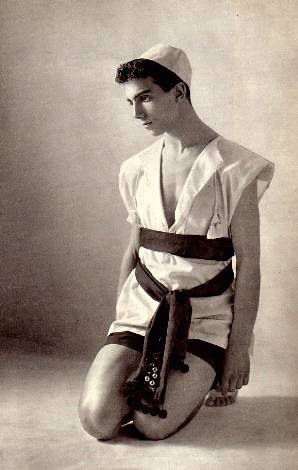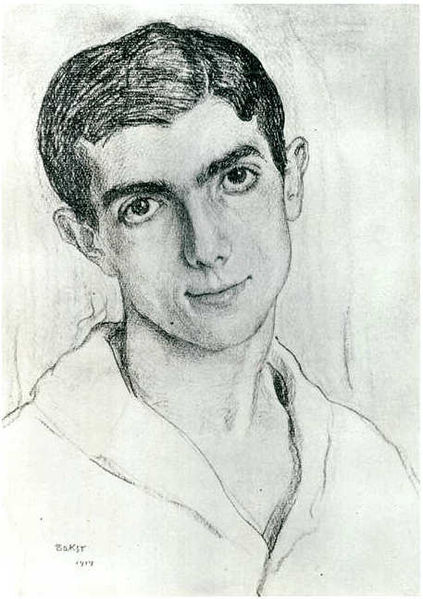<Back to Index>
- Choreographer and Dancer Leonid Fyodorovich Myasin, 1896
PAGE SPONSOR



Leonid Fyodorovich Myasin (Russian: Леонид Фёдорович Мясин), better known in the West by the French transliteration as Léonide Massine (9 August [O.S. 28 July] 1896 – 15 March 1979) was a Russian choreographer and ballet dancer.
Léonide Massine was born in Moscow and studied at the Bolshoi Theatre school. From 1915 to 1921 he was the principal choreographer of Sergei Diaghilev's Ballets Russes. Following the departure of Vaslav Nijinsky, the company's first male star, Massine became the preeminent male star and took over Nijinsky's roles. After the death of Diaghilev and the disbanding of his company, Massine became the choreographer and male lead dancer of the Ballet Russe de Monte Carlo, one of the companies that succeeded the original Ballets Russes.
Massine created the world's first symphonic ballet, Les Présages, in 1933 using Tchaikovsky's Symphony No. 5. This caused a furore amongst musical purists, who objected to a serious symphonic work being used as the basis of a ballet. Undeterred, Massine also adapted Hector Berlioz's 1830 Symphonie fantastique and danced the role of the Young Musician with Tamara Toumanova as the Beloved at its premiere at Covent Garden, London, on 24 July 1936 with the Ballets Russes. He also created La Boutique fantasque, Gaîté Parisienne and many other popular works during his years with the company.
Massine appeared in two films by the British directors Michael Powell and Emeric Pressburger: The Red Shoes (1948) and The Tales of Hoffmann (1951); and in a cameo in Powell's later Honeymoon (1959). He also starred in several ballet short subjects. For Warner Bros., he starred with the Ballet Russe de Monte Carlo in short Technicolor films of his ballets Gaîté Parisienne and Capriccio Espagnol titled, respectively, The Gay Parisian (1941) and Spanish Fiesta (1942). He choreographed and danced in the 1947 20th Century Fox color film Carnival In Costa Rica, and also choreographed and appeared as Punchinello in the film Carosello Napoletano.
He died in Borken West Germany on 15 March 1979, having made his home there with his wife Hannelore and two sons. Massine was inducted into the National Museum of Dance C.V. Whitney Hall of Fame in 2002.